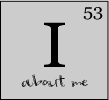This is what happens when you have an inquisitive daughter who LOVES SCIENCE. She reads science books and comes to you and says "Mom, can we do this experiment at my next birthday party?"
You can order a kit from Steve Spangler here. But we decided we could make one ourselves. Be sure to watch the YouTube video from their site...it's "awesome sauce" as Emma would say.
So our sweet exhausted Mike, who has been working all day and going to work from midnight to 4 in the morning, somehow found the time to drill a hole in glass so that we could make our own apparatus.
The jar is one of those drink dispensers that I never used with a hole drilled in it with a glass drill bit. We used the lid to control the amount of CO2 forced out the plastic tubing. Be sure to keep the water level below the tubing so only water vapor and CO2 are forced out. Use leather gloves to pick up the dry ice and put in warm water. THE DRY ICE WILL BURN YOU IF YOU TOUCH IT. DO NOT LET CHILDREN PLAY WITH DRY ICE. I handled the dry ice (with heavy duty gloves) and placed it in the container myself. Other than the dry ice, there is nothing else dangerous about this experiment. I felt very safe letting the kids play with the bubbles. I did make them wear goggles because of the dry ice and the soap.
We used warm water and dry ice to create the fog of CO2. Then forced it into the plastic tubing which we dipped into a cup of Dawn dish soap.
This was our practice session for her upcoming birthday party. We weren't sure what kind of soap solution would work best and if we had the right kind of gloves to actually keep the bubbles from popping. This "dry" run was worth the money spent. We needed the practice to figure out the right mixture of soap. In the photo below we tried bubble solution, but it did not work as well as the Dawn dish soap.
At first the bubbles popped immediately. Then we added more soap and got the concentration of Dawn higher and the bubbles lasted a lot longer and really bounced like in the video. The big girls could actually toss them back and forth. We also learned that the first towel we had down was too stiff and bumpy and was popping all the bubbles. Once we got a softer towel down the bubbles stopped bursting.
The science behind it. Dry ice is solid carbon dioxide. When it warms up to room temperature it sublimates, (it turns into a gas without going through the liquid stage). We can help this process along by putting it into warm water and it really goes to town. The carbon dioxide gas comes off so fast and it takes some water vapor along with it. This fog pours out the top of the container until we put a lid on it (NEVER SEAL DRY ICE INTO A CONTAINER IT WILL BUILD UP PRESSURE AND EXPLODE AND HURT YOU) and force it out the plastic tube. The plastic tube is put into the soap solution and the bubbles are filled with Carbon Dioxide which is heavier than air (which is mostly nitrogen) and water vapor. The bubbles are heavy and with the cotton gloves and a thick surfactant like the dawn dish soap you can keep the bubbles from bursting and play with them. They bounce and roll across the towel. And then they pop, they release their CO2 and water vapor fog.
We invited fellow science nerd Jennifer K and her daughter Lily over to for our trial run. Thanks for playing with us while we worked out the kinks. I think we are ready!



















super cool
ReplyDelete